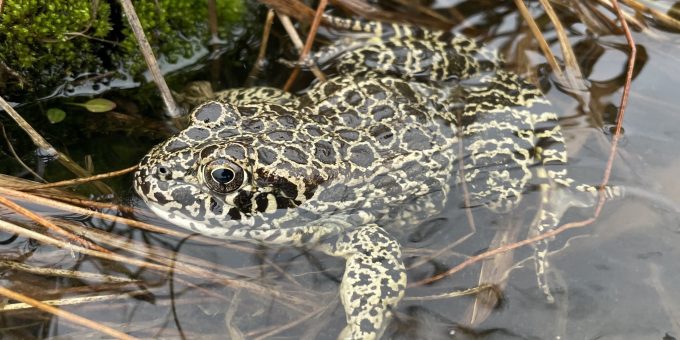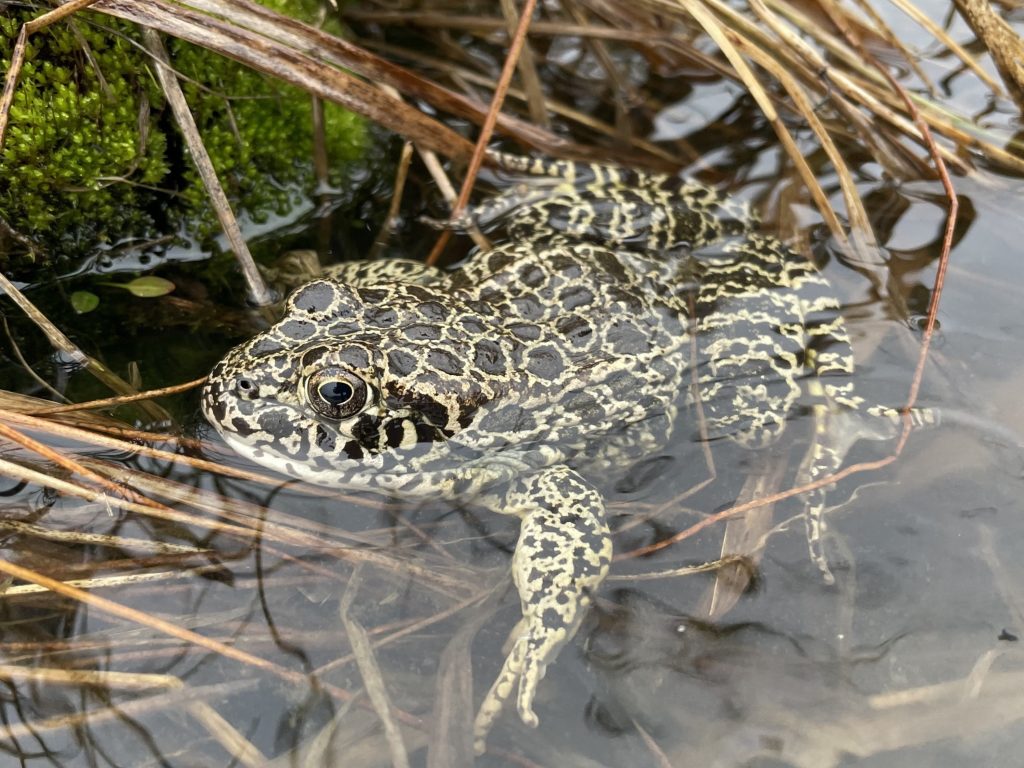
INDIANA – The Indiana Department of Natural Resources is intensifying efforts to recover the state-endangered crawfish frog, a species facing significant population declines. Biologists are expanding their recovery initiatives, building upon the success of recent translocation efforts.

Crawfish frogs, named for their unique habit of inhabiting crayfish burrows on land, were once common throughout Indiana. However, their numbers began to decline sharply around 1970, and the reasons for this decline remain partially unknown.
In 2024, the DNR launched a project to reverse this trend, successfully translocating eight egg masses, estimated to contain 40,000 eggs, from a robust population in Greene County to Angel Mounds State Historic Site in Evansville. The eggs and tadpoles thrived, developing and dispersing from the Angel Mounds wetland during summer.
Building on this success, the DNR is broadening its recovery efforts in 2025. Plans include constructing new crawfish frog breeding ponds at Hillenbrand and Sugar Ridge Fish & Wildlife Areas. A pilot study in collaboration with Purdue University will also see crawfish frog tadpoles raised in tanks at varying densities. These tadpoles will be released at Sugar Ridge FWA after metamorphosis. Angel Mounds will also receive additional crawfish frog egg masses this spring.
Simultaneously, DNR biologists are actively assessing other potential recovery sites, focusing on the presence of three essential habitat elements: grasslands, fishless wetlands, and abundant crayfish burrows. These habitat requirements are crucial for the crawfish frog’s survival and reproduction.
The expansion of these recovery efforts underscores the DNR’s commitment to protecting and restoring Indiana’s endangered species. The success of these initiatives will be vital in ensuring the future of the crawfish frog in the state.



